I'm training a NN with Pytorch to predict the expected price for the Boston dataset. The network looks like this:
from sklearn.datasets import load_boston
from torch.utils.data.dataset import Dataset
from torch.utils.data import DataLoader
import torch.nn.functional as F
import torch
import torch.nn as nn
import torch.optim as optim
class Net(nn.Module):
def __init__(self):
super().__init__()
self.fc1 = nn.Linear(13, 128)
self.fc2 = nn.Linear(128, 64)
self.fc3 = nn.Linear(64, 32)
self.fc4 = nn.Linear(32, 16)
self.fc5 = nn.Linear(16,1)
def forward(self, x):
x = self.fc1(x)
x = self.fc2(x)
x = F.relu(x)
x = self.fc3(x)
x = F.relu(x)
x = self.fc4(x)
x = F.relu(x)
return self.fc5(x)
And the data loader:
class BostonData(Dataset):
__xs = []
__ys = []
def __init__(self, train = True):
df = load_boston()
index = int(len(df["data"]) * 0.7)
if train:
self.__xs = df["data"][0:index]
self.__ys = df["target"][0:index]
else:
self.__xs = df["data"][index:]
self.__ys = df["target"][index:]
def __getitem__(self, index):
return self.__xs[index], self.__ys[index]
def __len__(self):
return len(self.__xs)
In my first attempt I didn't add the ReLU units, but after a little bit of research I saw that adding them is a common practice, but It didn't work out for me.
Here is the training code:
dset_train = BostonData(train = True)
dset_test = BostonData(train = False)
train_loader = DataLoader(dset_train, batch_size=30, shuffle=True)
test_loader = DataLoader(dset_train, batch_size=30, shuffle=True)
optimizer = optim.Adam(net.parameters(), lr = 0.001)
criterion = torch.nn.MSELoss()
EPOCHS = 10000
lloss = []
for epoch in range(EPOCHS):
for trainbatch in train_loader:
X,y = trainbatch
net.zero_grad()
output = net(X.float())
loss = criterion(output, y)
loss.backward()
optimizer.step()
lloss.append(loss)
print(loss)
After 10k epochs, the loss graph looks like the following
where I don't see any clear decrease.
I don't know if I'm messing up with the torch.nn.MSELoss(), the optimizer or maybe with the net topology, so any help will be appreciated.
Edit:
Changing the learning rate and normalizing the data didn't work for me. I added the line self.__xs = (self.__xs - self.__xs.mean()) / self.__xs.std()
and a change to lr = 0.01. The loss plot is very similar to the first one.
Same plot for lr = 0.01 and normalizing after 1000 epochs:

